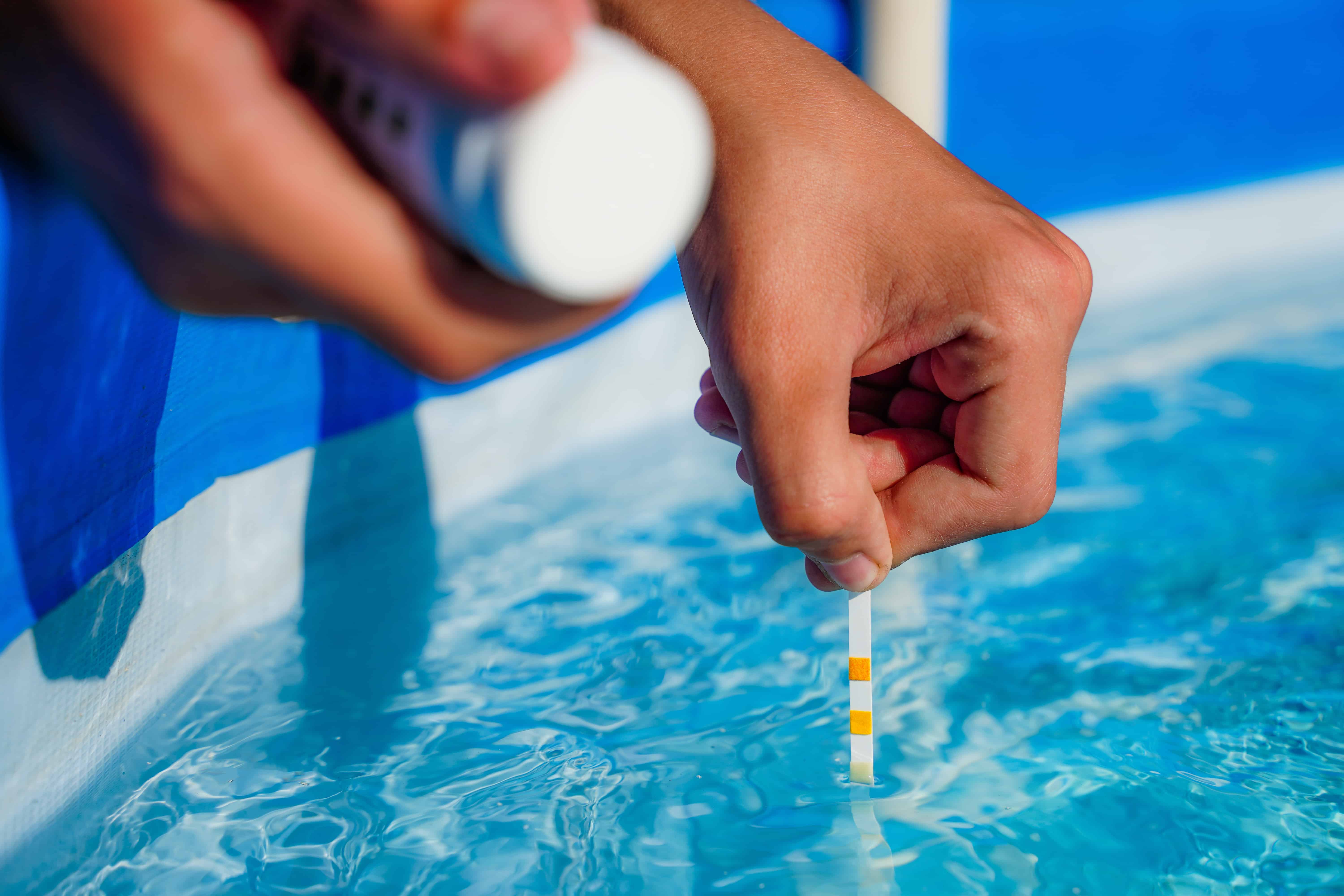Modern salt water pool chlorinators have digital live salt readings that give you instant results to ensure your salt level is kept in range. This range is typically 2,700 ppm – 3,400 ppm (parts per million).
But should you also test your salt level manually every so often just to ensure the reading is correct? Technology can fail from time to time and sometimes an old school back up doesn’t hurt, right?
Use test strips to confirm the salt level in your pool on a weekly basis. It’s a cheap and quick way to confirm the salt level is correct and depending on the strips you buy, can also verify other chemicals like free chlorine, pH, alkalinity and cyanuric acid are within range.
This can help you quickly confirm when something is out of range including salt, before it becomes a problem that will take you more time to correct in the long run.
What do pool test strips typically test for?
Assuming you get a test strip that includes salt (which you should), typical pool strips usually test for a combination of the following:
- Salt
- Free chlorine
- pH
- Alkalinity
- Cyanuric acid (stabilizer)
- Total hardness
Some strips test only test salt whereas others might test for 4-7 factors in total. Some test strips include bromine testing since it’s a popular sanitizer used in place of chlorine. You don’t need to test for bromine for a salt water pool.
Make sure you specifically buy a test strip that includes salt since it’s specific to salt water pools.
Many pool owners don’t own a salt water system so plenty of non-salt water pool specific test strips exist. Avoid them if you can since testing for salt is at least one of the things you want to know the answer to when testing your water.
How do you use salt water pool test strips?
Simply dip a test strip in the water to cover each of the test pads, circle it in the water for a second or two, take the strip out of the water and then wait up to 60 seconds for the results. You can refer to the test strips container to determine how to interpret the results.
Double check the exact instructions for your chosen brand but that’s usually how they work.
The colored pads will change to a different shade to give you a final reading for each chemical being measured. Hold your used strip up against the color coding system on the side of your strip bottle or box and interpret the results. Then you can act accordingly should one or more tested results show that you need to take corrective action i.e. add more salt, increase chlorine production, lower your pH, etc.
Make sure you keep the test strips in a cool, dry place. Don’t get them wet as that will ruin them.
What if my salt level is too high?
Depending on how high the salt level is, you can often do nothing and eventually the salt level will come back down. The higher end of the salt level range that you want to maintain is 3400 ppm. If your salt level is higher than 3400 parts per million, it’s generally considered to be high.
At some point your chlorinator will shut down when salt is too high to protect the salt cell from damage.
But if the salt level is only slightly higher than the maximum, you will find over the swimming season that the salt level reduces to the appropriate range. Salt doesn’t evaporate but splashing, back washing of your filter (if you have a sand or D.E. filter), leaks, and manual draining of the pool water will cause salt loss.
I’ve written more about how salt is lost in your pool in this article that goes into much more detail and also how to avoid it when possible.
You might end up finding out that your salt level naturally comes down on its own – which it will over time – and you end up doing nothing.
If your salt level is far too high because you added too much salt at one time, your only real choice is to drain some water and refill it with fresh water to dilute the salt level.
What if my salt level is too low?
You will need to manually add salt to your pool from time to time. If your salt level falls below 2700 ppm, it’s considered to be on the low side. At some point your chlorinator will also shut down when salt is too low to protect the salt cell from damage.
Typically you’ll add salt at the beginning of the season (pool opening) and perhaps halfway through the season.
If you winterize your pool by draining water below the returns like I do, you’ll find that you need to add more salt at pool opening time since salt will be lost through pool drainage at pool closing.
For me, I add 2 large bags of salt in the spring at pool opening and 1 large bag of salt during the midway point of the summer.
Just make sure that you don’t add too much salt too quickly otherwise you’ll be reading over the What if my salt level is too high part of this article again to figure out how to lower it!
Summary
Using salt water test strips is a quick and easy way to check your key salt water pool chemical readings including salt to keep your pool clear and clean. It’s also a great double check against the results of your automated chlorinator in the off chance that its reading is inaccurate.
Trust me: The quicker you find out about a particular chemical in your pool being low or high, the sooner you can correct it. This means less time, work and money on your part trying to fix a small problem that got larger before you noticed.

